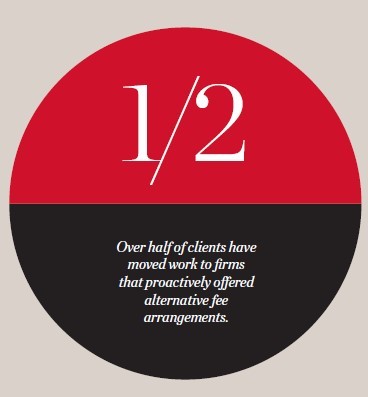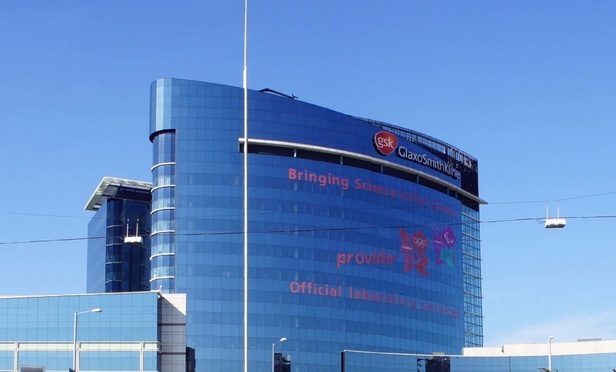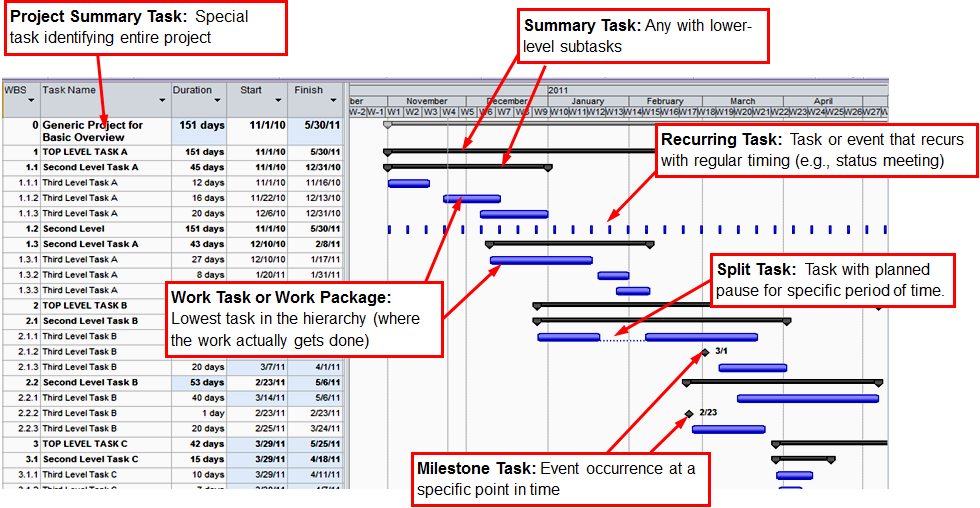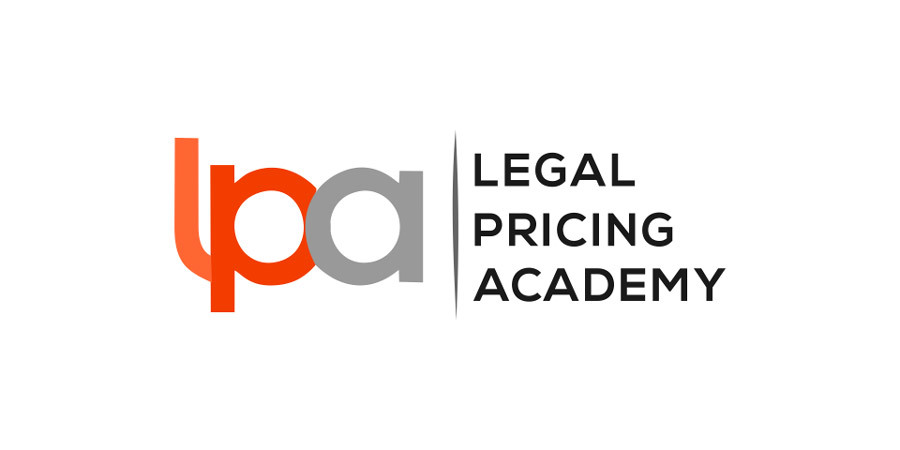With Validatum Pricing Espresso® we aim to bring you your regular pricing 'shot' - the best, most interesting, thought provoking and informative material we can find globally which will be of interest, relevance and help to you in your legal services pricing challenges. [Note: we don't always agree with the content of others that we post but the philosophy of Validatum Pricing Espresso® is shared perspectives, not a personal 'soap-box']

PRICING ECONOMICS
How Firms Should Be Measuring the Profitability of Matters

Matter profitability matters. Yet most firms struggle to measure it in a manner that is accurate, focused on the levers partners control, and inclines partners to take action. Using margin per partner Hour (MPH) to measure profitability delivers on these objectives.
The MPH measure enables assessment of profitability on matters with widely varying realization and leverage in a directly comparable way. It also allows you compare profitability consistently across clients, practice groups, and partners. But, from discussing the measure with law firm leaders, I know that the reasons the measure works aren't intuitive, so let me start with some principles and then turn to the particulars of MPH. Read more...
Law firms under pressure as demand flattens for legal services

Law firms are under pressure to drive profits through operational efficiency as demand for legal services remains flat.
Competition for legal services remains high, demand remains relatively flat and law firms are feeling pressure in pricing and operational efficiency, according to a new report. The 2017 Aderant Business of Law and Legal Technology Survey suggests law firms see improving operational efficiency as a key driver of profit. The survey found that the top five challenges were: pricing pressure, improving operational efficiency, winning new business, growing more business from existing customers, and improving law firm agility and adaptability. Operational efficiency appeared again later in the survey as an opportunity to gain an edge. For example, nearly three-quarters (74 per cent) said automating manual tasks has the most potential upside for law firms. Read more...
Pricing Legal Work is a Two-Way Street

Collaborative pricing
In a continuous improvement culture, key personnel from the law department and law firm convene to first identify and then implement efficiencies in all of the areas in which they collaborate. This means breaking down how things are done today, e.g., process mapping, and then pursuing a rigorous DMAIC (Define, Measure, Analyze, Improve, Control) method to establish new ways of operating. From this comes a detailed quality scorecard. By establishing best practices for how critical tasks must be performed, the law department shifts from relying on law firm “brand strength” as a proxy for quality to a more precise and consistent measurement of quality.
A key component of process improvement is defining the value of doing something well, so the law department now has guidance to inform its procurement of legal services. Read more...
Lost in Translation: BigLaw's communication (and trust) issues

We talk a lot about the change needed in pricing legal services. The reality, however, is that the impetus for change in pricing structures will come from the corporate buyers, not the BigLaw sellers, of legal services. In fact, law firm leaders have consistently acknowledged this in every Altman Weil survey for the past 5 years: 66% or more of firms offering services on an alternative fee arrangement (AFA) basis did so “in response to client demand,” rather than acting proactively out of a belief that new pricing models will create a competitive advantage.
Buyers are less conflicted than providers, but "still struggling" with alternative pricing models
The buyer perspective, however, throws an interesting curve ball. As has been the case for many years, the 2015 Altman Weil Chief Legal Officer Survey indicates that fee discounts and AFAs remain the 2 most frequently used means of cost control. Read more...
Is Change Now Unstoppable for Law Firm Billing?

It took less than 15 years after Steven Kobre founded Kobre & Kim for the New York-based firm to break into The Am Law 200.
Within another five years, Kobre said, the rest of the country’s top grossing firms will have learned a lesson his own firm picked up early on: It pays to embrace alternatives to the billable hour.
“Five years from now everybody is going to be doing it,” Kobre said of law firms inking nontraditional billing deals with clients. Read more...
First Half Financials Surprise on Strength of Biggest, Most Profitable Firms

Joining a crowd of positive reports on law firms’ first half financial performance, Wells Fargo Private Bank said on Tuesday that the first half was a surprising financial success for law firms, largely thanks to the performance of the largest and most profitable among them.
Revenue rose 5.6 percent compared to the same period a year ago at the 135 firms surveyed by Wells Fargo. The Am Law 50 led the way with 7 percent growth, compared to 6.6 percent for Am Law 100 firms and just under 3 percent for Am Law 200 firms included in the survey.
Despite their top-line outperformance, Am Law 50 firms saw smaller profit increases than their broader Am Law 100 peers due to associate salary increases costing more for the largest firms. The bottom line was up 8 percent for the Am Law 100 versus 6.8 percent for the Am Law 50. Read more...
Law firm revenue climbed 5.6 percent in year's first half, survey finds

Law firm revenue jumped 5.6 percent in the first half of the year, compared to the same period last year, according to a survey of about 135 law firms by Wells Fargo Private Bank’s Legal Specialty Group.
Driving the gains were law firms in the top tier—the Am Law 50, report Law.com and Bloomberg Big Law Business. Revenue grew 7 percent for law firms in the Am Law 50; 6.6 percent for firms in the Am Law 100–which includes the Am Law 50; and just under 3 percent for Second Hundred firms.
The survey also found that revenue per lawyer was up 3.8 percent and demand, measured by hours billed, was up 1.4 percent. Lawyer headcount rose 1.7 percent and expenses were up 5.5 percent, driven largely by associate salary hikes and headcount increases. Read more...
PMI Q2: What Are Law Firms Realizing with Increasing Rates?

Rates continue to be an unsurprisingly key concern for law firms as we move through 2017.
Just one quarter after reaching a two-year high in Q1 2017, worked rates slipped ever so slightly in Q2, though still up 2.9% relative to Q2 2016, according to the Thomson Reuters Peer Monitor Index report. Similarly, standard rates were up an average 2.9% across all three segments of the law firm market, with Am Law 100 firms seeing the most significant increase at 3.4% in Q2.
And in perhaps even more encouraging news, collected realization against worked rates rose to 89.1% on average across all segments, after hitting an all-time low in Q1. Here, though, Am Law 100 firms fell behind their competitors. While Am Law Second Hundred and Midsize law firms have enjoyed steady collected realization of 89% to 90% over the past two years, the average Am Law 100 firm has steadily decreased their collected versus agreed realization. With the gap in the realization rate between Am Law 100 and the other two segments widening, the question that remains is obvious: Why? Read more...
Law firms’ top 5 business challenges revealed

While competition in Australia’s legal market continues to climb, there appears to be five significant headwinds gaining ground
CommBank’s Legal Market Pulse has identified the top five business challenges which law firms believe are making an impact on the way they do business.
According to the report, negotiating prices with clients remains the most challenging condition among law firms, with 70 per cent of respondents identifying this as the top concern. In comparison, last year’s report revealed that 76 per cent of respondents selected this as a business challenge, indicating a slight decrease for this year’s report. Read more...
PRICING STRATEGY
J-Day has come – More fixed and capped costs are here to stay

It seems like only yesterday that Lord Justice Jackson delivered his ’Fixed Costs – The Time Has Come’ lecture to the Insolvency Practitioners Association. But it was way back in January 2016. The intervening 18 months have led to much speculation and concern in the legal world.
Back then, LJ Jackson reiterated his recommendation from his final report. A switch to fixed costs for all claims would be a step too far for the profession in the short-term. ’Reform is best done incrementally, so that we can see how it is working out … It is therefore appropriate to move on to fixing costs in the lower reaches of the multi-track,’ he said. But he was still open to moving to a universal fixed costs regime once we’d seen how this approach worked. Read more...
Been asked to discount your price? Here’s what you should do.

It’s a very real problem for most people within any business. Sometimes it happens very early on in your client relationships other times it happens a few years later. Either way it is quite likely that one of your clients will ask you to “just reduce your price” to them
Now let’s just imagine you’ve got this awesome client – Emma. You’ve been working with Emma for years, and you’ve always thought you’ve got on well, in fact when analysing your customer base this is one of your best and most profitable relationships. You feel that you have genuine rapport and enjoy working together. Then, out of the blue, Emma calls you and says “Look, we’ve really enjoyed working with you all these years, but as you know times are hard. We’re going to need you to give us a 20% discount going forward." Read more...
Is Lean Sigma an Alternative to Alternative Fees?

General counsel can try and reduce costs by demanding discounts or alternative fees from their outside counsel—but at the risk of pitting their own interests against those of the firm. An alternative could be collaborating with outside counsel to streamline processes so legal projects get done more efficiently and at a lower cost.
To that end, Parker Poe Adams & Bernstein is the latest firm to try out Lean Sigma management techniques, originally deployed in the manufacturing industry, for delivering legal services.
Seyfarth Shaw was an early adopter almost a decade ago. Clifford Chance has instituted firmwide Lean Sigma training, even publishing a white paper about the firm's experience applying "continuous improvement to high-end legal services," and other firms, including Ogletree, Deakins, Nash, Smoak & Stewartand Reed Smith, have instituted training for key firm leaders and staff. Read more...
Smaller Firms' Message to Big Law on Alternative Fees: Join the Club

Microsoft’s vow to make its outside lawyers bill nearly all their work under alternative fee arrangements caused a stir this month, given large law firms’ traditional devotion to the billable hour.
But for a growing number of mostly smaller firms, those anxieties highlight a Big Law business model they’ve already left behind.
“We’re not afraid of this, and we are used to this and comfortable with this and we see there is a way to make money with this,” said Michael McGee, CEO of 225-lawyer Miller, Canfield, Paddock and Stone. Read more...
My Kingdom for a Horse: The Psychology of Pricing

Think, just for a moment, exactly like a client.
You asked me to provide you with a quote for a particular legal service – one that you are relatively unfamiliar with. You have just received a copy of the firm’s terms of engagement and a fee quote that tells you that the work will cost £10,000 and is payable within 28 days of the final bill being issued, which is estimated to be in two months’ time.
Do you have any questions for me? Read more...
Opportunistic law firms succeed in changing their fortunes

Only a small number of opportunistic firms are making the big changes needed to increase revenue and market share.
A focus on increasing internal efficiency by leveraging legal project management and technology, in addition to exploring new revenue streams, is driving law firm success, according to new research benchmarking law firms and their clients. The results show 66 per cent of firms are focused on being more efficient, but only a small group of opportunistic practices are actually executing on this focus, leading to new business opportunities. Read more...
Alternative pricing models set to skyrocket

Despite most firms concurring they still strongly rely on pricing by the billable hour for majority of their revenue, they believe that they will eventually step away from hourly rates and instead head towards fixed fees or value-based pricing in the near future.
According to CommBank’s latest Legal Market Pulse, both top-tier and mid-tier firms describe themselves as strongly reliant on pricing by the billable hour for most of their revenue.
The results found seven out of eight top-tiers and 22 out of 32 mid-tiers surveyed said they rely on hourly rates for more than 60 per cent of their revenue. Read more...
Central Pa. Firms Aim to Seize on Cry for More AFAs

Firms in lower-rate markets, such as those in central Pennsylvania, have long touted the cost savings they can offer clients. But with the growing demand for alternative fee arrangements, they've found another attraction to draw clients away from the big city—and they're preparing to do more.
Leaders of several firms based in or with a major presence in central Pennsylvania said they're already working on an alternative fee basis in various practice areas. But they want to do more.
"I don't think you can see the landscape changing yet, but you're going to," Barley Snyder managing partner Jeffrey Lobach said. Read more...
Pocket Price Waterfall: An Important Tool for Identifying Profit Leakage

Capturing the price that is initially set is just as important as setting the initial price right. On Liozu & Hinterhuber’spricing capability grid, one must be equally proficient in price setting and price setting to be considered a pricing champion as profit leakages from poor discounting practices can have a detrimental impact on the firm’s bottom-line.
In 2013, McKinsey & Co. looked into just how detrimental this impact was for a global lighting supplier. They broke down every single discount and promotion from the initial list price, to the invoice price, but also beyond the invoice price all the way to the pocket price. Read more...
GENERAL COUNSEL
Microsoft Deputy GC: In New Outside Counsel Program, AFAs Plus Competition Equals Success

Microsoft Corp. is taking another look at how it works with outside law firms, placing a stronger focus on alternative fee arrangements, retainer payments, diversity and developing relationships with outside counsel that go beyond the billable hour.
The company's legal department began using the new approach, dubbed the Strategic Partner Program, July 1 and has named 13 partner law firms so far, including Arent Fox, Covington & Burling, Davis Wright Tremaine, Fish & Richardson and Greenberg Traurig. Read more...
How Pharma Giant GSK Got Tough on Fixed Fees

I've been having a lot of conversations lately about alternative fee arrangements(AFAs).
In a earlier column, I wrote that the death of the billable hour has been one of the most consistently overhyped nonevents in the history of Big Law. Indeed, despite the move to AFAs having been heralded for decades, the majority of high-value mandates are still handled on-the-clock.
Part of the problem seems to be that clients and law firms can't decide who should be actually driving this reform. Read more...
PROCUREMENT
Innovation And The Law: Technology To Assist With The Dreaded RFP Process

It’s no secret that the process of drafting, receiving and responding to an RFP for ediscovery services is met with angst from both sides.
Tell me if this sounds familiar: a client puts out a complex, often very thick RFP document that the client thinks asks all the pertinent questions, and the responding party looks at the document and has dozens of questions to truly understand the scope of what the client is looking for and needs. The client may hold an hour-long Q&A on the phone in which none of the responding parties want to ask questions for fear of giving information to the other responding parties. Or, even better, the client allows the responding parties to submit written questions and then provides the answers only to the party who submitted them. Then the responding parties spend hundreds of hours responding to the full request knowing they have a less than 20% chance of success. Oy. Read more...
Can Procurement Save the Least Diverse Profession in the United States?

Shira Scheindlin is appalled that women’s roles in New York City courtrooms are still, after all these years, miniscule.
According to her account in the New York Times, Scheindlin has endured decades on the federal bench in New York, listening to male lawyers argue cases as lead counsel while their female counterparts often sat silently at the table.
The biggest outcry, of course, has been about the gender pay gap in the legal profession. For example, three former female partners “have brought a $100 million lawsuit accusing the now-merged firm Chadbourne & Parke of gender pay disparity,” according to another Times story, which the firm is contesting. Read more...
How to create a winning law firm RFP

Ari Kaplan spoke with Silvia Hodges Silverstein, the executive director of the Buying Legal Council, the international trade organization for legal procurement, and John De Forte, a London-based consultant to law and other professional services firms.
De Forte is the author of Winning Proposals: The Essential Guide for Law Firms and Legal Services Providers, which the Buying Legal Council published in July. Read more...
BILLABLE HOUR
Why Timesheets Focus Firm Leaders on the Wrong Things

Have you ever changed your mind on an issue in which you had a strong belief? What was that process like? Was it a sudden epiphany—a BFO moment (Blinding Flash of the Obvious)—or was it a more gradual and incremental process as you increasingly wrestled with the matter?
I write as a reformed CPA and cost accountant who has changed his mind on the value of timesheets and cost accounting. According to philosopher Amélie Oksenberg Rorty, a crucial principle for coming to know the truth is, namely: Read more...
Don’t Be Lazy: The Billable Hour Has Survived For A Reason

You’re not overthinking it. You probably can’t overthink it.
Many films have scenes that are instructive for litigators. One of them is Stage Beauty, the Sir Richard Eyres-directed 2004 historical drama starring Billy Crudup as an actor whose career is disrupted by Restoration-era regulatory change. Crudup’s character, Edward Kynaston, had developed a specialization playing female parts in Shakespearean plays at a time when women were banned from the English stage. Unfortunately for Kynaston, the new administration of Charles II suddenly not only allows women to be actors, but bans men from playing female parts. Read more...
8 reasons why the billable hour is the cockroach of the legal sector

We are all well aware of the commonly cited ‘fact’ that cockroaches will be the lone survivors following a nuclear holocaust. But what does the indestructibility of cockroaches have to do with alternative fee arrangements and the legal sector, you ask? In short, despite being hated by most clients and subjected to significant pressures for many years now, time-based billing has refused to die. In fact, in my experience, time based billing remains the dominant billing method for most legal work completed by large commercial law firms. This article examines the reasons why the billable hour seems impervious to extreme destructive forces (much like cockroaches) and the factors that may be holding back firms and clients that want to embrace alternative fee arrangements.
Accounting systems
Most firms utilise accounting software designed to record tasks completed by lawyers exclusively on the basis of the time spent by them completing that task. This laser-like focus (of the software and systems) on time makes it difficult, if not impossible, for firms to capture the value of the work on the basis of any other measure. Put simply, current legacy software and systems are simply not flexible enough to offer, manage and track different forms of fee arrangements. Read more...
LEGAL PROJECT MANAGEMENT
TEN THINGS: LEGAL PROJECT MANAGEMENT FOR BEGINNERS

Managing a legal project is not an easy task. Not for in-house counsel or for outside counsel. There are simply too many ways for a project to “come off the rails” and turn into a disaster. Usually, the disaster has to do with cost/budget. While blowing the budget is definitely not good, a worse scenario is when the disaster results in the project failing, be it a contract, and merger or acquisition, or a piece of litigation where the stakes are high. A project “fail” can mean big problems for in-house lawyers, all the way up to being shown the door. This is why it’s so important for in-house counsel and outside counsel to be on the same page any time there is a project of material size or risk. The key for in-house counsel is understanding that you cannot simply turn the project over to outside counsel and “hope for the best.” Successful legal projects require the involvement and input of in-house lawyers every step of the way.
Over the past decade or so, “Legal Project Management” has grown into an accepted (and in-demand) way to manage legal work sent to outside counsel. However, it can be a rather involved process and while I am a big believer that it does pay off not all in-house lawyers are ready to step up to the level of commitment required to really do “LPM” right. That’s okay. I think any in-house lawyer can apply the basic concepts of LPM and even a cursory application of the basics will lead to better project management and better results. This edition of “Ten Things” discusses the basics of Legal Project Management and how you can utilize them as a “beginner” to the process: Read more...
Competitive Market Be Damned: Firms Still Shun Project Management Tech

Exterro's 2017 Law Firm Benchmarking Report found that a majority of law firms still use manual processes to manage their legal projects—but is a change on the horizon?
While legal technology has the ability to completely transform a host of tasks, from keeping up with new laws to filing briefs, one of its most valuable benefits for today's law firms is in bringing efficiencies to project management.
But according to Exterro's 2017 Law Firm Benchmarking Report, a survey of 126 U.S. law firms across more than 30 states, most still have yet to use technology to better organize, automate and empower their project management processes. Read more...
PRICING PROFESSIONALS
Price Like a Professional Because That’s What You Are

Setting your hourly billing rate or quoting flat fees is a big challenge when you are starting out, launching as a solo, or re-vamping your practice. Whichever method you choose for determining your rate, keep one overriding principle in mind: you are a professional, and your prices should reflect the value that you bring to your clients.
Consider Other Professionals You Pay
Think of all the people you pay to do work for you. Even if you’re a hardcore DIYer, there must be things you pay to have done. Perhaps you regularly pay someone to clean your house, or wash your car, or change your oil. Those things are of great benefit to you even though you really could do them yourself. Read more...

